Are you thinking of leveraging influencer marketing to promote your products?
That’s a wise choice.
Influencers can not only help you reach new audiences, but also win over their trust. You can get leads that are more sales-ready than raw leads. If you work with influencers smartly, you can easily nurture these leads and convert them into paying customers.
But is influencer marketing really that great?
Yes, it is.
We have the numbers to back us up on this.
According to a study by Edelman Trust Barometer, 63% of people aged 18-34 trust influencers over brands. So if an influencer vouches for your product, it becomes easier to secure buy-in from new customers.
Influencers can improve your sales and brand advocacy too. 58% of respondents in the cited study had bought an influencer-recommended product and 33% had discussed a brand in their circle because of an influencer.
Great news, isn’t it?
This means that whether you want to create buzz about upcoming products or boost the visibility of your existing products, influencer marketing can do the job for you.
But like all marketing tactics, you have to plan your influencer-led promotions meticulously.
If you’re new to influencer marketing, you can find this part challenging. To make your life easier, we have outlined some effective ways by which you can leverage influencers to promote products in this post.
Let’s dive right in.
How Can You Promote Products Through Influencer Marketing?
As stated earlier, customers are losing trust in online ads and self-promotional content. Even using influencers for product promotions can fall flat if it’s not done strategically. The tips below will make your influencer campaigns more relatable and fruitful.
1. Select the Right Influencer/s
You should pick influencers that are in the same niche and have similar audience demographics and values as your brand. If you build a network of relevant influencers, you can spread the word about your products faster, even if those influencers have small but passionate audiences.
All of the influencers were from home improvement, lifestyle, or interior design niches. Since the brand and influencers were from related industries, audiences found the collaboration natural and believable.
Manual influencer research can be time-consuming and prone to errors. Influencer marketing platforms like Fourstarzz Media have advanced filters to help you narrow down your search. The tool provides detailed influencer reports that can help you compare their key metrics and audiences at a glance.
2. Give Creative Freedom to Your Influencers
People love influencers for their authenticity. If you hamper your influencers’ creativity with strict guidelines, influencers will lose their edge. They may create content that aligns with your rules but doesn’t resonate with their audience. In which case the whole purpose of hiring influencers will be defeated.
Example: AXE is one brand that lets influencers unleash their creativity to promote their hair grooming products. They teamed up with 30 offbeat Instagram influencers with trendy hairdos. Each influencer created videos in their unique voice, explaining how AXE products helped keep their hair in shape.
One of AXE’s influencers, Anthony Padilla, who stands out for his wild curls, created a video in which he mocked typical beauty advertisements that featured people with perfectly-coiffed hair, whereas this is far from reality. The post touched a chord with the audience and garnered 26K+ views.
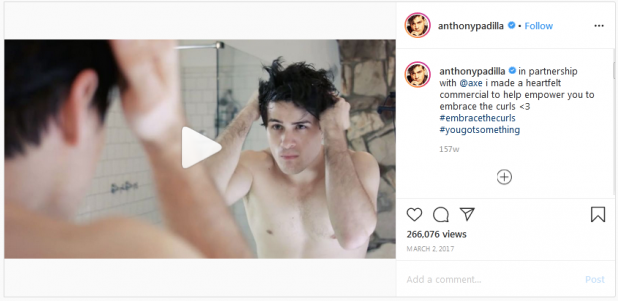
3. Host Contests and Giveaways
Who doesn’t love free stuff? Contests and giveaways are a sure-shot way of engaging audiences and promoting products. And they become even more effective when an influencer does one on your behalf.
Your influencers can create sponsored contests with your products. They can instruct participants to tag more users in their contest entry, use a custom hashtag, or reshare the contest post. In this way, your product reaches more people and you get tons of free user-generated content.
Example: St Francis Herb Farm partnered with influencer, Jenny Lam, to host a giveaway on Instagram. Notice how she created urgency by attaching a tight deadline for the contest to end. In the post, she also asked contestants to tag her and her partner brand.
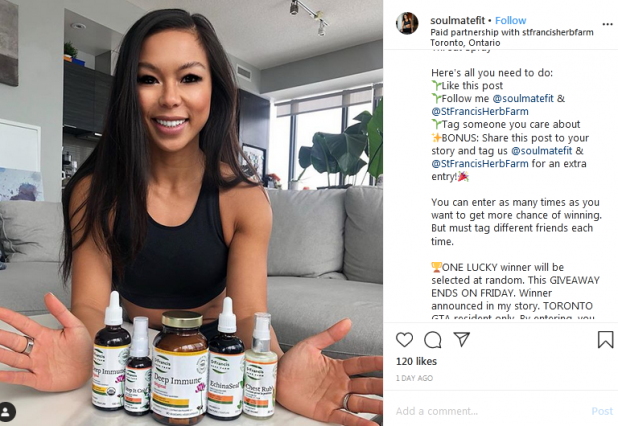
You can use advanced tools for hashtag tracking to discover popular hashtags that are relevant to your campaign. Encourage your influencers and their followers to append the trending hashtags in their posts.
4. Tailor Custom Promo and Discount Codes
Your influencers can offer promo codes for your products, meant to be used exclusively by their followers. This will not only increase your product’s sales but also help your influencer attract new followers. More followers means more brand awareness.
Example: Mel K, one of the influencers who collaborates with Woke Wings, shared a custom promo code for her followers to avail a discount on the brand’s products. This tactic helps the brand boost sales and track the influencer’s ROI.
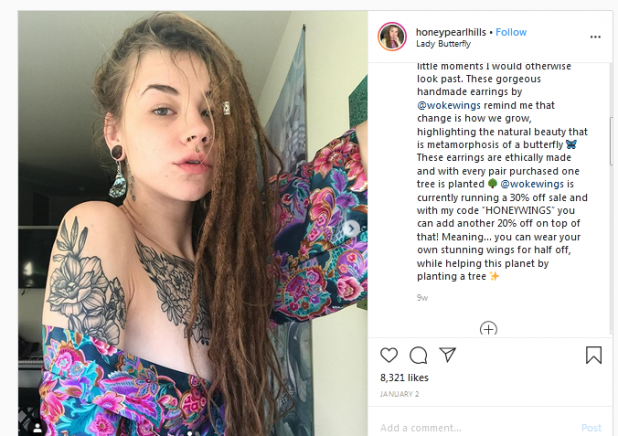
Connect Your Product with a Cause
Cause marketing is big these days.
53% of customers want the brands they engage with to support worthy social causes and make a difference. If you and your influencers create a brand story (message) pivoting around a cause, you can strike a chord with the audience and market your products better.
The key is to keep your message real and relevant. Don’t connect your product to a cause just because it is trending. Audiences are averse to brands that use social causes as a marketing ploy. Pick a cause about which you and your influencers are passionate so that your message looks credible.
Example: Boxed Water partnered with influencers to promote the #ReTree project which aims to get people to plant one million trees in five years. Known for championing sustainable life choices (such as eliminating plastic waste), Boxed Water picked a cause that resonates with their brand image.
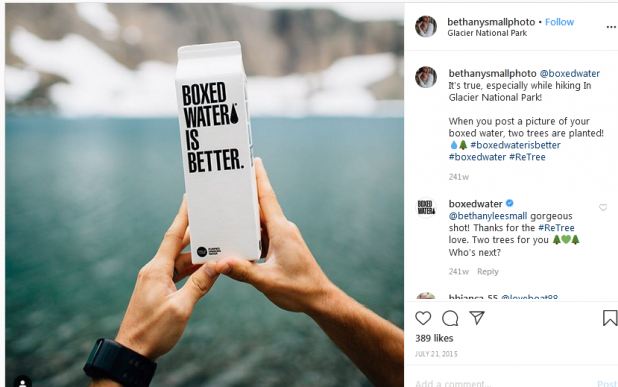
Cross-Promote Your Influencer’s Content
You need to be visible on as many social networks as possible so that your promoted products grab eyeballs. Both you and your influencers should cross-promote each other’s content by tagging and resharing. You can bypass channels that aren’t important for your audiences or compatible with your product or posted content.
It can be hard to manage multiple social accounts. Luckily, there are tools for social media management that can help you schedule posts and track their performance on all platforms from one interface.
Offer Sneak Peeks
To make your products buzz-worthy, give your audience a sneak peek into their making. Influencers can create teaser videos and behind-the-scenes clips to share with their followers. They can post pictures from exclusive product launches and build excitement about upcoming products.
Influencer reviews are regarded highly by followers. Have influencers review your products and share their opinions on your social stories. Unboxing videos are a great way to do this. You can evoke trust among audiences for new products in this way.
Example: Skincare student and beauty influencer, Claudia Christin, regularly reviews skin products for brands. Due to her background in medical sciences, her opinions are trustworthy and garner a lot of engagement even though she mentions “sponsored review” in her posts.
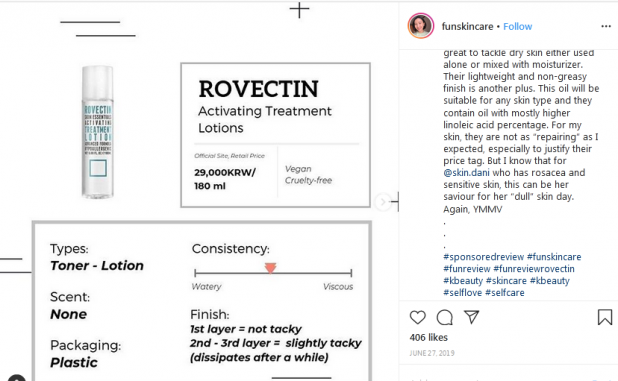
Final Thoughts
By collaborating with influencers, you can cut through the noise on the internet and make yourself heard in new target markets. As a product promotion tactic, influencer marketing is not only powerful but also more cost-effective than traditional forms of advertising.
No wonder why it is being touted as the future of marketing.
There are many ways of using influencer marketing to promote your product. But the tactics mentioned in this post are the ones that have proved quite effective.
Do you have any more ideas to promote products through influencer marketing? Drop a comment to share them.





